 Our last blog post devoted a paragraph to Clay Shirky’s latest book, Cognitive Surplus: Creativity and Generosity in a Connected Age, in which he seeks to explore the notion that the digital age is stimulating more people to use their spare time for creative means instead of mere consumptive ones as was the trend during the late 20th Century.
Our last blog post devoted a paragraph to Clay Shirky’s latest book, Cognitive Surplus: Creativity and Generosity in a Connected Age, in which he seeks to explore the notion that the digital age is stimulating more people to use their spare time for creative means instead of mere consumptive ones as was the trend during the late 20th Century.
Shirky is quick to highlight (he does a fantastic TED Talk on the subject here) that examples of cognitive surplus can manifest themselves in many ways – from collaborative news sites to LOLcats – and with much of the last few weeks spent looking at digital behaviour during the festive season, I couldn’t help wonder if there is a notable surge in cognitive surplus around Christmas? And whether the ‘festive spirit’ can be seen to influence this behaviour – and ultimately speed up the shift?
There are several reasons I would expect the festive season – at least, here in the UK – to stimulate a surge in cognitive surplus:
1. We have more free time. With a sufficient holiday many of us are quick to find those extra moments to focus on projects we don’t usually have the time for. Arguably, this free time could be used for spending time with family and friends, buying gifts and consuming Christmas entertainment – but looking at data collected by Hitwise during Christmas 2009 reminds us of the popularity of Facebook and YouTube last Christmas (it was Facebook’s busiest day of the year). Now we are used to sharing and socializing, it seems logical that we will be more inclined to create and contribute to such networks the more second nature they become to our habits.
2. We are introduced to new technologies. Mobiles, desktops, laptops, smartphones, software, digital cameras etc. All are given and received in abundance at this time of year – and all facilitate creation. A quick search for Christmas on YouTube yields nearly 3,000,000 results with some homemade favourites such as How To Wrap A Cat For Christmas exemplifying one of countless ways to use a video camera. Flickr is another place to keep an eye on cognitive surplus around Christmas – indeed the ‘christmas’ tag itself is one of the most popular on the site as I write, and it seems likely to increase in popularity the closer we get to the big day.
3. We are subject to surprising weather conditions. Although absurd to some, the arrival of snow and ice in winter does appear to trigger a uniquely British response which sees a nation obsessed with both the positive and negative aspects of the white stuff. To make sense of the chaos, a number of uniquely 21st Century methods of collaboration have been created and used by an increasingly larger number of people. In 2009 #uksnow Map was launched mashing up Google Maps and Twitter to keep track of the cold weather in real time, whereas this year Tom Barrett aimed to do a similar crowdsourcing experiment with snow depths at: edte.ch/blog/2010/12/01/uksnowdepth/
4. We feel generous. In simple terms, the aforementioned points are – as those familiar with Shirky’s ideas will know – fairly typical as examples for seeing evidence of cognitive surplus. I.e. free time, technology and fast changing news events which affect many can happen at any time but may, as we have seen, occur more at Christmas.
Yet, my final point refers to an idea which is arguably more unique to Christmas: generosity. After all, this is the season of good will to all men – and individuals, groups and even businesses seem eager to give something back. Indeed, in a tradition that may have began with the Christmas records released for their fanclub by the Beatles between 1963 and 1969, many bands today are releasing online singles, EPs and albums via online means such as Bandcamp as a special thank you to their fans for their support during the year. Even the race for the Christmas No. 1 today is underpinned by contributing a certain amount of money to the favoured charity of the artists involved – in a prime example of collaborating, creating and sharing for the good of society.

 Much has been written about the impact social media such as Facebook and Twitter has had on the recent revolution in Egypt. Although, new media has no doubt been a significant help in order to empower those protesting, might it be that the ultimate overthrowing of Hosni Mubarak’s regime has been less about social media channels and more about new approaches to collaboration across multiple (of which Twitter and Facebook are ingredients) channels?
Much has been written about the impact social media such as Facebook and Twitter has had on the recent revolution in Egypt. Although, new media has no doubt been a significant help in order to empower those protesting, might it be that the ultimate overthrowing of Hosni Mubarak’s regime has been less about social media channels and more about new approaches to collaboration across multiple (of which Twitter and Facebook are ingredients) channels?
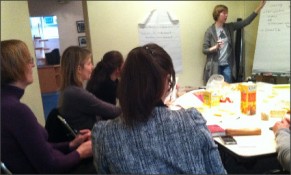
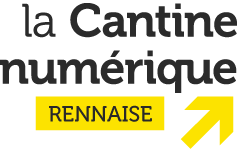

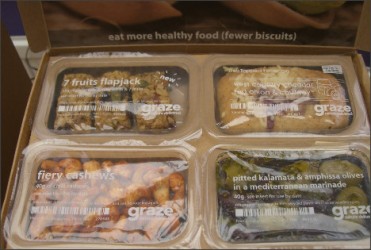 If you are familiar with coworking offices and collaborative spaces you will likely be aware of the idea that eating and drinking – and environments where these activities are going on – can be integral to helping start-ups and individuals finding and working on new ideas. Indeed, as readers of our post
If you are familiar with coworking offices and collaborative spaces you will likely be aware of the idea that eating and drinking – and environments where these activities are going on – can be integral to helping start-ups and individuals finding and working on new ideas. Indeed, as readers of our post  Our last blog post devoted a paragraph to Clay Shirky’s latest book, Cognitive Surplus: Creativity and Generosity in a Connected Age, in which he seeks to explore the notion that the digital age is stimulating more people to use their spare time for creative means instead of mere consumptive ones as was the trend during the late 20th Century.
Our last blog post devoted a paragraph to Clay Shirky’s latest book, Cognitive Surplus: Creativity and Generosity in a Connected Age, in which he seeks to explore the notion that the digital age is stimulating more people to use their spare time for creative means instead of mere consumptive ones as was the trend during the late 20th Century.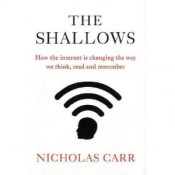 1.
1.  2.
2. 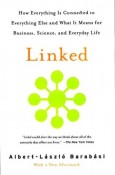 3.
3.  4.
4.  5.
5.  It is little surprise that being green seems to be an important aspect of running a successful coworking business. After all, for a movement that has been borne from the need to foster a community which works to nurture the individuals within it, it makes sense that many coworking spaces are conscientious about how the way they run their businesses will have an impact beyond their own walls. And it is safe to say that operating in an environmentally friendly way is a key part of many of the coworking initiatives we have discussed in previous posts in our Great Minds series.
It is little surprise that being green seems to be an important aspect of running a successful coworking business. After all, for a movement that has been borne from the need to foster a community which works to nurture the individuals within it, it makes sense that many coworking spaces are conscientious about how the way they run their businesses will have an impact beyond their own walls. And it is safe to say that operating in an environmentally friendly way is a key part of many of the coworking initiatives we have discussed in previous posts in our Great Minds series. With a population verging on 200 million and a fast-growing mobile market, Brazilian coworking spaces have been founded in – amongst other places – Sao Paulo and Rio de Janeiro, and are set for opening in more outlying cities such as Curitiba. The well established
With a population verging on 200 million and a fast-growing mobile market, Brazilian coworking spaces have been founded in – amongst other places – Sao Paulo and Rio de Janeiro, and are set for opening in more outlying cities such as Curitiba. The well established 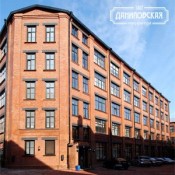 Russia
Russia As Greig mentions in his article, the rise in social media is inspiring many search specialists to think social when it comes to SEO in India, and areas around Delhi and Goa have seen an emerging digital scene. When it comes to coworking, Delhi may well be home to India’s
As Greig mentions in his article, the rise in social media is inspiring many search specialists to think social when it comes to SEO in India, and areas around Delhi and Goa have seen an emerging digital scene. When it comes to coworking, Delhi may well be home to India’s  In-keeping with China’s vibrant and fast advancing digital scene, coworking really appears to be well established in the country, with Hong Kong and the surrounding area seeming to be at the forefront (
In-keeping with China’s vibrant and fast advancing digital scene, coworking really appears to be well established in the country, with Hong Kong and the surrounding area seeming to be at the forefront (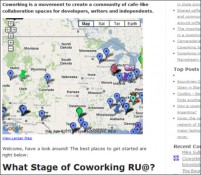 Although connectivity and being online is a key aspect of any well-equipped coworking space, we rarely discuss the presence of the wider coworking community online. That reason alone seemed good enough to dedicate this post to the best coworking resources online (as well as our own humble blog, of course) in order to give an informed idea of the best web-based places for ideas, inspiration and information.
Although connectivity and being online is a key aspect of any well-equipped coworking space, we rarely discuss the presence of the wider coworking community online. That reason alone seemed good enough to dedicate this post to the best coworking resources online (as well as our own humble blog, of course) in order to give an informed idea of the best web-based places for ideas, inspiration and information.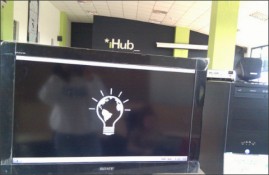 iHub
iHub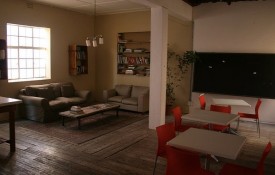 Open Innovation Studio
Open Innovation Studio Bantalabs
Bantalabs Limbe Labs Ventures
Limbe Labs Ventures
